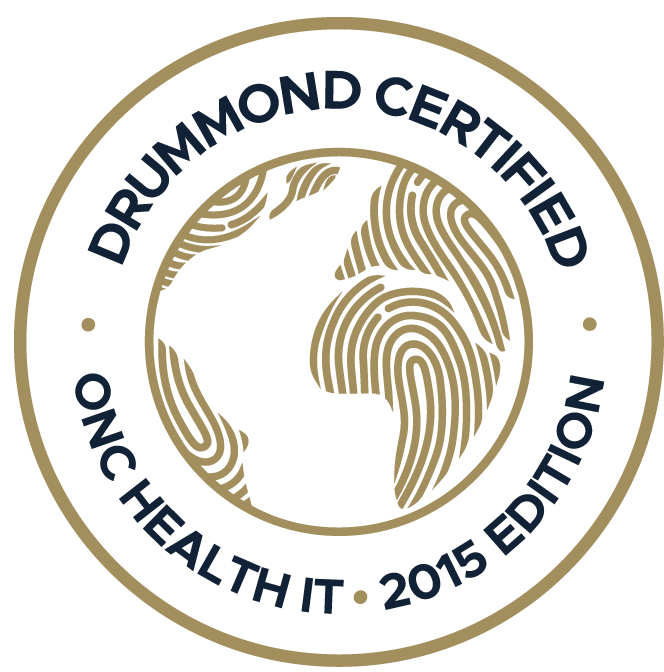Urgent care doesn’t have to mean long waits or crowded clinics. Telemedicine makes care faster, safer, and more accessible, helping providers and patients manage common concerns efficiently.
The American Academy of Pediatrics (AAP) encourages EHR adoption in pediatric practices to streamline the complexities of managing patient care. Despite the high usage rate, with over 96% of pediatric doctors utilizing EHRs, many face challenges due to inadequate functionality. Specifically, over 80% of pediatricians navigate systems lacking specialty-specific features, while more than 38% use EHRs offering only basic functions.
The issue stems from the generic nature of many EHR systems, which fail to meet the needs of pediatric care. Specialty Specific EHR platforms, like Practice EHR, are essential for providing comprehensive care tailored to children's unique requirements. Key functionalities such as detailed documentation options, customized workflows, e-prescribing, and patient portals are critical for enhancing care delivery in pediatric settings.
This blog aims to highlight the crucial features of Pediatrics EHR software that support pediatric practices in delivering efficient and effective care. Focusing on these specialty-specific elements can significantly impact the daily operations of a pediatrics doctor and ensure that first aid pediatrics and ongoing care are managed with the utmost precision and attention to the distinct needs of children.

1. Comprehensive Charting
Comprehensive charting in pediatric EHR software is essential for capturing the full scope of a child's health journey. This feature allows healthcare providers to document every aspect of care, from routine check-ups to detailed notes on specific medical conditions.
Comprehensive charting ensures that all health data, including growth measurements, developmental milestones, immunization records, and treatment plans, are meticulously recorded and easily accessible. This level of detail in charting is crucial for pediatric care, where growth and development are closely monitored and compared against established norms.
The ability to chart variations and trends over time assists in the early detection of potential health issues, facilitating timely intervention. Additionally, comprehensive charting supports a holistic view of the patient's health, integrating physical, mental, and social factors, which are vital for formulating effective, individualized care plans.
2. Immunization Management
Immunization management is a critical component of an all-in-one EHR software designed to streamline the vaccination process and ensure adherence to immunization schedules. This feature simplifies tracking and documenting vaccinations, providing first aid pediatrics with up-to-date records that are essential for preventive pediatric care.
With immunization management tools, pediatric practices can easily schedule vaccine appointments, send reminders to parents, and maintain a comprehensive record of each patient’s immunization history. This functionality facilitates timely and consistent vaccinations and helps quickly identify patients who are due or overdue for their shots, ensuring compliance with public health standards.
3. Customizable Templates
Customizable templates in pediatric EHR software are a game-changer for healthcare providers, offering the flexibility to tailor documentation to the unique needs of pediatric care. These customizable templates can be adapted to suit various types of visits, from well-child exams and acute illness visits to chronic condition management, ensuring that all relevant information is captured efficiently and thoroughly.
Customizing templates means a pediatrics doctor can quickly document patient encounters with pre-populated fields for common assessments, symptoms, and treatments, streamlining the charting process and reducing administrative time. This customization includes growth charts, developmental milestones, and immunization records, integral to pediatric care.
Furthermore, customizable templates can enhance the accuracy of medical records, as they guide a pediatrics doctor to enter specific and detailed information, minimizing the risk of omissions or errors. They also support standardized care delivery, adhering to clinical guidelines and best practices in pediatrics.
4. Patient Portal
The patient portal significantly enhances patient and family engagement in healthcare. This digital gateway allows parents and guardians to actively participate in managing their child’s health by providing online access to medical records, appointment schedules, and direct communication with healthcare providers.
Families can easily view upcoming appointments, receive reminders, access vaccination records, and track growth and developmental milestones through the patient portal. This immediate access to health information empowers parents to stay informed as well as engaged when it comes to their child’s care journey. Thus, this feature fosters a collaborative relationship between families and healthcare providers.
Moreover, the portal facilitates efficient communication, allowing parents to send messages, ask questions, and receive medical advice from first aid pediatrics without the requirement of in-person visits or phone calls, saving time and resources for both parties.
5. Clinical Decision Support
Clinical decision support (CDS) is an invaluable tool that enhances the quality and effectiveness of care provided to children. This feature offers real-time guidance and evidence-based recommendations to a pediatrics doctor, aiding in the accurate diagnosis and effective treatment of pediatric patients.
CDS systems analyze patient data, including medical history, symptoms, and test results, to suggest potential diagnoses and recommend treatment options. This support is particularly beneficial in pediatrics, where the presentation of symptoms and the effectiveness of treatments can vary significantly with the age and development stage of the child.
Moreover, clinical decision support helps ensure care is consistent with the latest medical research and clinical guidelines and thus promotes the best possible outcomes for young patients. Most importantly, it alerts first aid pediatrics to critical information, such as drug interactions, allergies, and specific health risks, reducing the chances of medical errors and adverse events.
6. E-prescribing
E-prescribing streamlines the medication management process, enhancing safety and efficiency in pediatric care. This digital prescribing system allows healthcare providers, including first aid pediatrics, to send prescriptions electronically to pharmacies. Thus, it minimizes the risks of handwritten prescription errors and ensures faster medication dispensing.
E-prescribing is particularly beneficial for pediatric patients as it supports dosage accuracy and considers the child's age, weight, and health conditions. The system automatically checks for potential drug interactions, allergies, and contraindications and alerts providers to any concerns that may affect the child's health, thus improving the overall safety of prescribed treatments.
Moreover, e-prescribing facilitates better communication between a pediatrics doctor and a pharmacist, ensuring that any issues with medication availability or insurance coverage are resolved promptly. This direct line of communication helps find suitable alternatives when necessary, avoiding delays in starting treatments.
7. Privacy and Consent Management
Privacy and consent management are critical to pediatric care, ensuring that sensitive patient information is handled with the utmost care and complies with legal standards. This feature safeguards the privacy of children's health records, allowing access only to authorized personnel and requiring explicit consent for the sharing of information.
In pediatric care, managing consent is particularly complex, as it involves the patients and their parents or guardians. Pediatric EHR systems facilitate this process by providing transparent, structured formats for obtaining and recording consent for various medical procedures and treatments. This helps maintain legal compliance and build trust with families, as they are assured their children's health information is protected and used appropriately.
Additionally, these systems offer vigorous security measures, including encryption and secure login protocols, to prevent unauthorized access to patient data. Regular audits and access logs within the EHR can also track who views or modifies patient data, adding an additional layer of security and accountability.

Practice EHR - ONE Tailored to Meet the Needs of Pediatric Care!
Transitioning to an EHR system designed specifically for pediatric care, like Practice EHR, can significantly enhance the operational efficiency and quality of care in pediatric practices. Practice EHR stands out as a comprehensive solution tailored to meet the intricate needs of pediatric care, offering a range of features from growth tracking and immunization management to advanced privacy controls.
For a pediatrics doctor, having access to a specialty-specific EHR like Practice EHR means more time can be devoted to patient care, with less time spent on administrative tasks. The system’s rich features support every aspect of pediatric care, including first aid pediatrics, ensuring that every child receives timely and appropriate treatment. Get a Free Demo Today!
Topics: Patient Care, EHR Solution, Specialty-Specific EHR, digital age, Industry Update, Medical Billing, Medical billing services, RCM, EHR, Technology in Healthcare, Kiosk, EHR Features, ePrescribing, Pediatrics EHR
RECENT POSTS



TOPICS
- EHR Solution (193)
- EHR (127)
- digital age (120)
- Patient Care (117)
- Medical Billing (112)
- Specialty-Specific EHR (112)
- Industry Update (98)
- Technology in Healthcare (84)
- EHR Features (79)
- Small Practice (78)
- Medical billing services (74)
- Integrated EHR (64)
- RCM (64)
- HIPAA Security (62)
- Cloud-based EHR (44)
- New Technology (44)
- Telemedicine (44)
- Healthcare Office Management (40)
- Practice EHR News (38)
- Kiosk (31)
- Revenue Cycle Management (28)
- AI Solutions (25)
- ePrescribing (21)
- AI Scribing (17)
- Best EHR Software (17)
- Practice Management Software (13)
- AI-powered Medical Billing (12)
- EMR (12)
- TeleVisit (12)
- AI EHR (11)
- Practice Automation (11)
- AI Scribe (10)
- Client Favorites (10)
- The ONE (10)
- Switching to New EHR (9)
- Urgent Care (9)
- AI scanning (8)
- Best EHR Practice (8)
- EHR Integration (8)
- MACRA/MIPS (8)
- Patient Portal (8)
- Psychiatry EHR (8)
- Automated Health Tools (6)
- E-Prescribing (6)
- Medical Practice Management Software (6)
- Product Updates (6)
- events (6)
- MIPS (5)
- Mobile EHR (5)
- Telehealth Platforms (5)
- Family Medicine EHR (4)
- HIPAA (4)
- Insider (4)
- Integrated Practice Management (4)
- Internal Medicine EHR (4)
- MIPS Reporting (4)
- Multilingual AI Scribe (4)
- Orthopedics EHR (4)
- Podiatry (4)
- Podiatry EHR (4)
- Regulatory Updates (4)
- Telehealth Platform (4)
- Automated EHR (3)
- Chiropractic EHR (3)
- Digital Experiences (3)
- EHR Flaws (3)
- EHR Implementation (3)
- EHR for Chiropractors (3)
- EHR for Small Practices (3)
- Eligibility Verification in Medical Billing (3)
- Medical Coding Services (3)
- Patient Check-in Kiosk (3)
- PracticeEHR GO App (3)
- Cash Flow (2)
- Cashless Payments (2)
- Clearinghouse (2)
- Dermatology EHR (2)
- EHR Scheduling (2)
- Family Medicine (2)
- Foot and Ankle Care (2)
- Foot and Ankle EHR (2)
- Health records 101 (2)
- Healthcare Compliance Certification (2)
- Medical Billing Partner (2)
- Medical Credentialing (2)
- Pediatrics EHR (2)
- Quality of Patient Care (2)
- Reporting Under MIPS (2)
- Risk and Liability in Medical Settings (2)
- Voice-Activated AI Scribe (2)
- What Works Clearinghouse (2)
- ACA Subsidy (1)
- AI Scan (1)
- AI Scribe for Pediatric Care (1)
- Bariatric EHR (1)
- Behavioral Health Practices (1)
- Billing Communication (1)
- Billing for Private Practices (1)
- Cardiology EHR (1)
- Charting (1)
- Data Security (1)
- Dos and Don'ts (1)
- EHR Dashboard (1)
- EHR Guides (1)
- EHR KPIs (1)
- EHR Questions to Ask (1)
- EHR Transition (1)
- EHR for Chronic Illness (1)
- EMR vs EHR Difference (1)
- ENT EHR (1)
- Endocrinology EHR (1)
- Gastroenterology (1)
- Gastroenterology EHR (1)
- General Surgery EHR (1)
- Geriatric AI scribe (1)
- Geriatrics EHR (1)
- Guides (1)
- Healthcare Practice Office Management (1)
- Help Center Videos (1)
- Insurance Reimbursement (1)
- KPI (1)
- Key Performance Indicators (1)
- Lab Processing (1)
- MACRA (1)
- Nephrology EHR (1)
- Neurology EHR (1)
- Pain Management EHR (1)
- Patient Behavior (1)
- Pediatric Care (1)
- Physical Therapy EHR (1)
- Practice Cash Flow (1)
- Practice Efficiency (1)
- Pulmonology EHR (1)
- Reconsider Your EHR (1)
- Simplify Practice Management (1)
- Staffing in Healthcare (1)
- Switch Medical Billing Providers (1)
- Urgent Care Medical Billing (1)
- Urology EHR (1)
- insurance claim denials (1)








